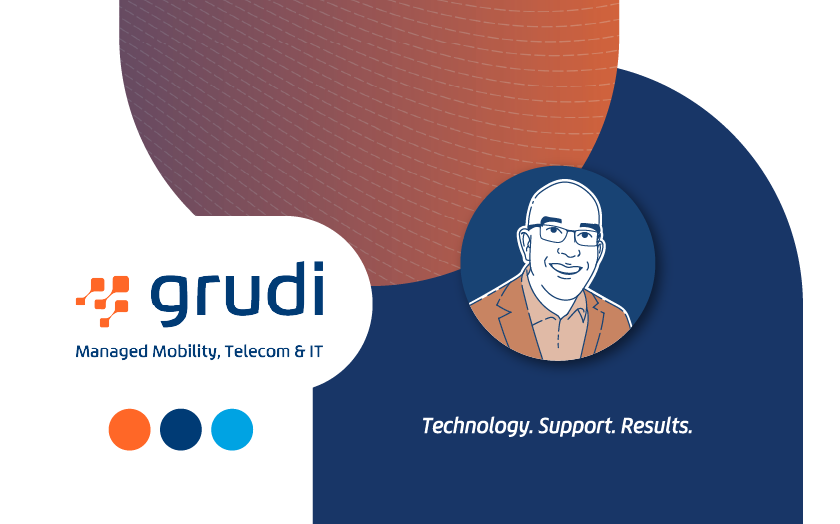This website uses cookies to ensure you get the best experience on our website. If you continue to use this site we will assume that you are happy with it.
Brand Refresh or Rebrand? When to Update vs. Start Over
Table of Contents
Has your brand fallen behind?
In August 2025, Cracker Barrel unveiled a rebrand that stripped away the character and personality people had loved for 55 years. The company took a distinctive identity customers immediately recognized and watered it down into something generic and forgettable.
The new logo was technically clean and modern – simpler than the original while retaining the barrel and logotype. But being technically sound doesn’t make a rebrand strategically right. This wasn’t the identity Cracker Barrel needed. It looked like every other restaurant brand trying to chase contemporary design trends rather than honoring what made them recognizable in the first place.
The backlash was immediate and brutal. Customers didn’t see “modern.” They saw their favorite nostalgic brand erasing itself. Within weeks, Cracker Barrel quietly rolled back to their original identity.
This expensive mistake offers valuable lessons for growing organizations considering brand changes. When you’re running a lean operation, you don’t have a massive marketing budget to recover from brand decisions that alienate your audience or erase decades of recognition.
The strategic alternative is a brand refresh – modernizing your visual identity while preserving what people actually value about your organization. This is the approach that lets you evolve without throwing away your equity.

The Cracker Barrel Lesson – When Rebranding Goes Wrong
When Cracker Barrel changed their logo, they removed the distinctive character that made them instantly recognizable. The warm, nostalgic feeling that drew customers in for decades disappeared. The new identity looked like every other generic restaurant brand, erasing the built recognition and emotional connection that took 55 years to establish.
The Financial Reality
The backlash cost Cracker Barrel over $100 million in market value when their stock plunged 12% in one day. Even after recovering slightly, they lost nearly $94 million in market capitalization and had to reverse their rebrand within weeks. That’s an expensive lesson in the importance of understanding your brand equity before you change it.
Why This Matters When You're Running a Lean Operation
- Brand changes that remove your distinctive character make you forgettable
- You can’t afford to waste resources chasing design trends that don’t fit your organization
- Your limited marketing budget means every brand decision has higher stakes
- Most growing organizations get one chance to make brand decisions that support growth rather than hinder it
- Recovery from brand mistakes takes time and money you may not have
Brand Refresh vs. Rebrand – What's the Difference?
Cracker Barrel made the wrong choice between a brand refresh and a rebrand – and it cost them big. So what’s the difference between the two?
Brand Refresh
Think of it like renovating your house versus tearing it down and starting over. A refresh means strategic updates that build on what’s already working. You’re modernizing elements while preserving the core recognition you’ve built over time.
Rebrand
This is the tear-down-and-rebuild approach. Complete strategic repositioning that requires an entirely new visual identity. Starting fresh when your current brand actively works against your business goals.
How Do You Know Which One You Need?
Most growing organizations benefit more from a refresh than a rebrand. You’ve worked hard to build recognition and relationships – throwing that away without strategic reason is expensive and risky.

The Brand Refresh Assessment – What to Consider Before You Change Anything
Before making any design decisions, I walk through four areas with clients:
Brand Equity Audit
- What positive associations exist with your current brand?
- How much recognition have you built in your visual identity?
- Do your best clients have emotional connections to specific brand elements?
- When people refer you, what visual elements do they mention or recognize?
- Are there specific colors, symbols or design elements that clients consistently comment on?
Business Analysis
- Has your core offering fundamentally changed or just expanded?
- Are you targeting the same audience or completely different markets?
- Does your current brand accurately represent your capabilities today?
- Have your services evolved while your brand stayed the same?
- Are you competing for the same type of clients or entering new market segments?
Market Position Check
- Are you competing in the same space or entering new markets?
- Do industry expectations require visual updates?
- How does your brand compare to current competitors?
- Have your industry’s visual standards evolved significantly?
- Are potential clients making assumptions about your capabilities based on outdated branding?
Strategic Goal Clarification
- What business objectives does the brand change need to support?
- Are you trying to attract new audiences or better serve existing ones?
- What specific problems is your current brand creating?
- Do you need to support premium pricing or build more credibility?
- How will you measure success after the brand changes?
When a Brand Refresh Makes Sense
You Have Brand Equity Worth Preserving
If existing clients know and trust your current brand, you’ve built something valuable. This equity shows up when clients can easily identify your materials in a stack of proposals, or they’ve expressed attachment to specific visual elements over the years. Brand equity also appears in client retention – if people keep coming back and referring others, your brand recognition plays a role in that loyalty. Throwing away recognition that took years to build means starting over with client education and market positioning.
Your Core Business Hasn’t Fundamentally Changed
When you’re serving the same target audience with expanded or refined services, a refresh makes more sense than a complete overhaul. Your existing clients understand what you do – they need to see that you’ve grown and modernized. A refresh can communicate expanded capabilities while maintaining the trust and recognition you’ve already established. This approach works especially well when your services have evolved gradually over time rather than pivoting to completely different offerings.
Timeline and Budget Favor Gradual Change
A refresh typically costs less and has a shorter timeframe from start to finish. You can often implement changes in phases, spreading both the investment and the adjustment period over several months. This approach reduces business disruption and allows you to gauge market response before fully committing to major changes.
Your Industry Values Professional Appearance
In sectors where visual credibility affects pricing power and client confidence, strategic updates matter more than complete overhauls. Professional services, healthcare, finance and B2B companies often benefit from refreshes that maintain recognition while updating their appearance to current standards. Clients in these industries value stability and expertise – a refresh can demonstrate that you’re current and professional without suggesting instability or major changes.
Strategic Brand Refresh in Action – The Grudi Success Story

Let me walk you through how this played out with Grudi Associates, a technology company I’ve worked with for the last 23 years. When we first created their logo back in the early 2000s, they were a smaller IT support company, and I was a budding designer starting out my design business. Grudi at that time had no brand, no logo and no real strategy for communicating what they do, so we helped them with that foundation.
Fast forward 15 years – they’d evolved into a comprehensive managed mobility, telecom and IT services provider, but their brand still looked exactly like it did in 2002.
The Strategic Challenge
Grudi had built incredible brand equity. Their clients loved them, their team worked harder than anyone in the industry, and they had a solid reputation. But the technology sector had evolved dramatically, and their outdated visual identity wasn’t keeping pace with their expanded capabilities or the professional standards clients expected.
Our Assessment
This was a clear case for refresh, not rebrand. They had too much positive equity to throw away, but they needed to look as professional and current as the sophisticated services they were delivering.
What We Preserved
- Their reputation for excellent service – this was their competitive advantage and market differentiator.
- The name recognition – 20 years of “Grudi” brand equity was valuable.
- Core company positioning – they were still the highly reliable, knowledgeable technology partner clients trusted.
- The navy blue and orange color palette – clients recognized these colors immediately and they had strong brand equity.
What We Refreshed
- Simplified the name from “Grudi Associates” to “Grudi” – the word “Associates” didn’t add value and made their name unnecessarily long.
- Refreshed their tagline to “Technology. Support. Results.” – which clearly communicated their value proposition.
- Updated their typography for better digital performance and professional appearance.
- Created strategic symbolism – those three pixel elements represented their three core service areas: Managed Mobility, Telecom and IT.
The Strategic Thinking
Every design decision connected back to business strategy. The three pixel elements weren’t arbitrary – they visually communicated Grudi’s three service pillars while giving them a more tech-forward, contemporary identity. We kept what clients valued while updating what made them look outdated. There was strategy behind the messaging and copywriting in addition to the visuals – everything worked together to support their business goals.
The Rollout
We implemented gradually to avoid client confusion. New business cards, updated website, refreshed marketing materials – all maintaining the colors and overall feel clients expected while looking unmistakably more professional and current.
The Result
Grudi was still the same wonderful company their clients trusted, and now their brand reflected that. They were keeping up with the times and staying relevant while maintaining all their existing client relationships and positioning themselves to attract new business that matched their evolved capabilities.

When a Rebrand Becomes Necessary
Sometimes you do need to start fresh:
- Fundamental Business Model Changes – If you’re shifting from B2B to B2C, entering completely different industries, or your service offering has transformed entirely.
- Negative Brand Associations – If your current brand carries problematic connotations or past issues require a fresh start.
- Merger or Acquisition Requirements – If you’re combining two distinct brands into a unified identity often requires a complete rebrand.
- Geographic or Market Expansion – If your current brand doesn’t translate to new markets or cultural considerations require a different approach.
Making the Refresh vs. Rebrand Decision
If you’re still on the fence, here are the questions I ask clients to help them decide between a rebrand or refresh:
Key Questions for Evaluation:
- Can you afford the disruption of a complete rebrand? Rebranding takes longer, costs more and carries higher risk of alienating existing clients.
- Do your best clients have positive associations with your current brand? If yes, a refresh probably makes more sense.
- Are you solving business problems or just appearance problems? Brand changes can’t fix operational issues, pricing problems or service delivery gaps.
- Will a refresh support your growth goals effectively? Sometimes strategic updates get you where you need to go without unnecessary risk.

What a Brand Refresh Actually Includes
A complete brand refresh addresses multiple components that work together:
- Brand Strategy Foundation – Updated positioning statements, refined value propositions, strategic messaging framework that connects to visual decisions.
- Brand Messaging Alignment – Consistent communication across all touchpoints, updated taglines or descriptors, key messages that support business objectives.
- Visual Identity System – Logo refinement, updated color palette and typography, modernized brand guidelines, digital-optimized assets.
- Implementation Assets – Website updates, marketing collateral refresh, digital presence optimization, internal communications updates.
Choose the Right Approach for Your Business
Grudi’s success came from thinking strategically about what to preserve versus what to update. Cracker Barrel’s expensive mistake came from throwing away brand equity without understanding what made them distinctive in the first place.
Most growing organizations benefit more from refreshing than rebranding. You’ve worked hard to build trust and recognition – strategic updates often get you where you need to go without the unnecessary risk and expense of starting over.
The key is honest assessment: What’s working for you, what’s working against you, and what strategic changes will move your business forward most effectively?